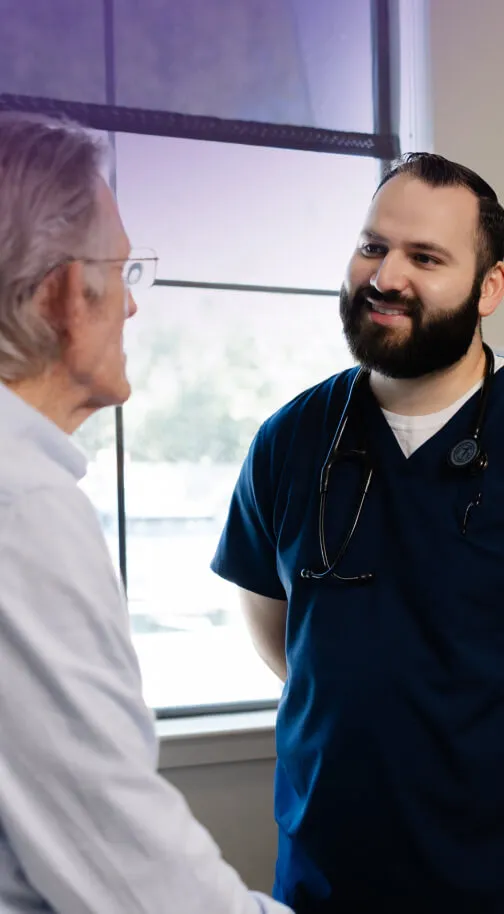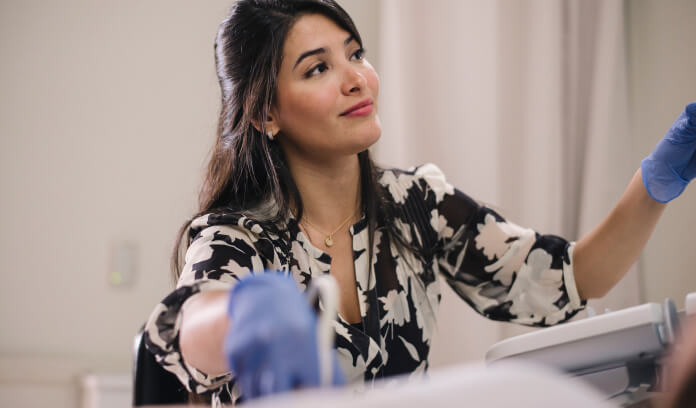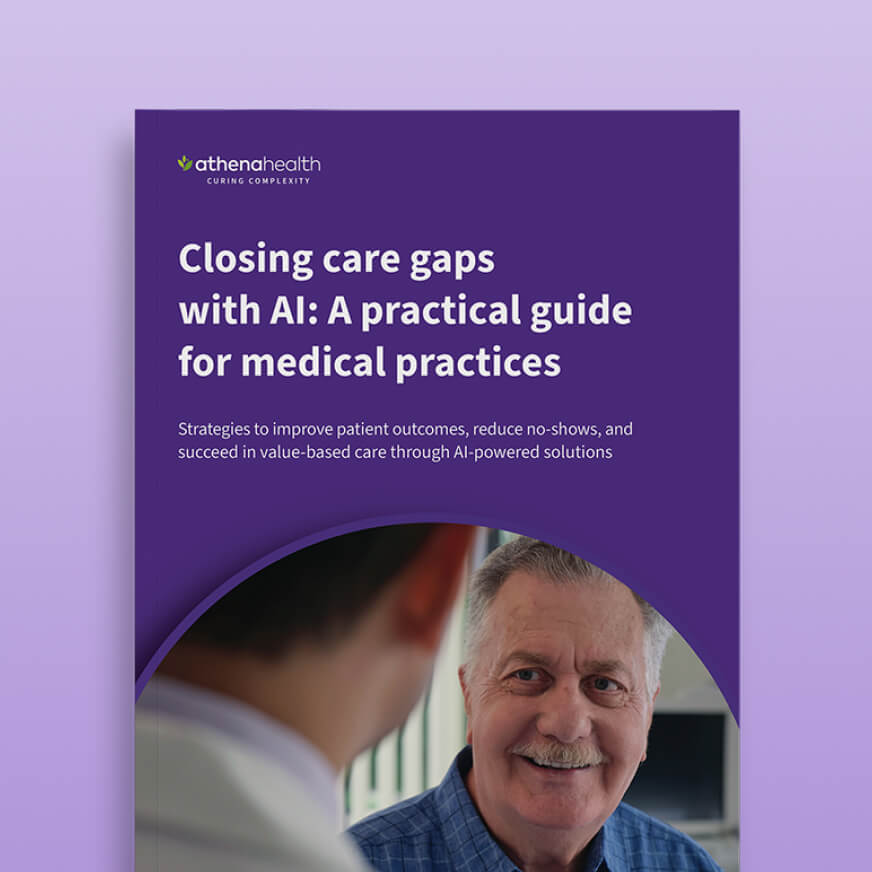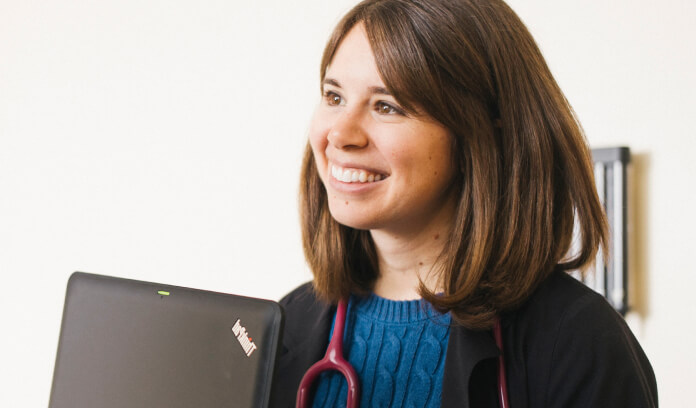Healthcare access is generally defined as the ease with which someone can obtain needed medical care. There are a variety of factors that can limit healthcare access, though it’s accurate to say that most are connected to social, cultural, economic, and geographic issues.
While there are many ways to close access gaps in each category, we’ve highlighted a few examples of provider programs from across the country that are making a difference.
Social improvements
Getting to the doctor isn’t always as easy as it seems. Consider, for example, senior citizens: If unable to drive, seniors are left to rely on friends and family for a ride, or take community-provided transportation to get to their appointments. This pain point is getting better thanks to the rise of ride-sharing services like Lyft and Uber, but some healthcare centers are looking at ways to further make an impact — after all, providing transportation services can improve access to care and important medications, which can positively impact long-term care outcomes.
In one such instance, Henry J. Austin, an integrated care site in Trenton, New Jersey, is rolling out a partnership this month with Uber Health to provide free transportation to patients in need.
Henry J. Austin’s CEO, Kemi Alli, M.D., says although only about 20 to 25 percent of patients struggle with transportation, those who do — mostly elderly folks or mothers with several children — often find public transportation challenging.
We’re trying to create a system to help fill the gaps
“We’re trying to create a system to help fill the gaps when all other modes of transportation are not available to our patients, and the hope is we can really help them get to us when they need to,” Alli explains.
Uber Health provides Henry J. Austin a dashboard that case managers can use to arrange for patients’ transport to appointments. Patients have the option of sending a text to Uber Health indicating when they want to be picked up.
Improving healthcare access can also take the form of proactive patient education in community settings. For instance, this summer, Bon Ku, M.D., director of the Health Design Lab at Thomas Jefferson University, partnered with Esperanza Health Center, a federally qualified health center (FQHC) in North Philadelphia, as well as Sunday Suppers, a non-profit organization, to design a six-week course primarily focused on teaching families how to cook and eat healthier meals.
“If we can teach families to cook healthier, in the long term that’s going to be the best thing to prevent diabetes, hypertension and the other problems associated with obesity,” Ku says.
Cultural improvements
Language barriers still rank high as a top barrier to healthcare access. For some patients, limited English proficiency (LEP) makes it difficult to understand treatment options and medication adherence instructions. The Joint Commission requires hospitals to provide interpreters to patients requesting assistance; however, this requirement can be met by tapping existing bilingual staff members. Hiring permanent interpreters isn’t always a practical solution due to cost and lack of reimbursement for interpreters and the number of languages sometimes requested.
In addition to relying on volunteer interpreters, some hospital systems have turned to tech solutions that connect healthcare providers directly to local, onsite interpreters to eliminate agency costs and inefficiencies. These apps work similar to ride-sharing apps in that when a provider puts in a request, local interpreters are pinged on their smartphones and can respond. Lehigh Valley Health Network (LVHN) began using such an application in 2016 with surprising results. Prior to the rollout, only 17 percent of on-staff interpreters’ time was engaged in interpretation with clients. After implementing the tool, interpreter engagement rose to 93 percent.
Another option available to hospitals is remote simultaneous medical interpreting, where the clinician and patient use a headset connected to an interpreter in a remote location. Interactive video platforms such as Stratus Video provide hospitals and health centers a suite of options to access certified interpreters.
Geographic improvements
Two ways to improve healthcare access through proximity include partnering with ambulatory surgical centers and opening a walk-in clinic. Both come with their own expenditures, but with more patients seeking convenience, the outlay could be worthwhile.
After noticing that the 30 appointments held open for urgent care each day were filled by 9 a.m., Annapolis Internal Medicine, a primary care practice, opened a walk-in clinic for established patients downstairs from the main practice. Staffed by four nurse practitioners, the Annapolis Internal Medicine Walk-In Clinic is open for extended weekday hours and most of Saturday.
“Because the walk-in clinic is just an extension of our regular office and is not considered urgent care, patient out-of-pocket costs haven't changed,” said Yvette Perry, comptroller and compliance manager. When we really measured and evaluated the demand, we realized that we were falling well short of where we needed to be,” Perry said. Now, Perry said, the clinic satisfaction levels have remained quite high, most recently at 98.22 percent.
When it comes to scheduling outpatient surgeries, finding an open operating room can take months. In some areas, the only option for outpatient surgery is a large medical center with operating rooms chronically booked at capacity.
For instance, University of Kentucky Louisville medical center has 1,000 beds, but the surgical center is typically booked at capacity for months in advance. To quickly expand outpatient access without impacting inpatient surgery volume, UK partnered with Surgical Care Affiliates, which operates more than 200 ambulatory surgery centers nationwide. The joint venture between UK and Lexington Surgery Center opened in mid-November 2018 and hosts eight operating rooms and four procedure rooms.
UK identified four high-volume, low-acuity surgeries ideal for an ambulatory setting including: gastroenterology, ophthalmology, pediatric ENT, and plastic surgery. Kristi Willett, director of UK medical campus public relations, said the surgery center has since added endoscopy services to the mix as well. “We continue to review opportunities for cases to migrate to the surgery center that are a good fit from a value and patient access standpoint,” Willett said.
Economic improvements
Despite historic gains in health insurance coverage due to the ACA, according to the Kaufman Family Foundation, as many as 27.4 million non-elderly people were without coverage in 2017. And higher out-of-pocket costs impact many who are at or near the poverty line.
As a result, some providers and clinics are embracing direct primary care through a membership model designed primarily for patients who don’t carry insurance. Patients pay a modest monthly fee (typically $50 to $80) for a generous allocation of appointments (often same-day) and access to providers by phone, email, and live chat. In many cases, routine tests and procedures are included, but some practices offer certain services at discounted rates.
Although it’s certainly no substitute for insurance, the direct primary care membership model might increase access for patients who would otherwise forgo medical care because of out-of-pocket costs.
In another example of removing economic barriers to healthcare access, the Esperanza Health Center on Chicago’s Southwest Side launched a culturally competent colorectal cancer screening program four years ago to increase preventive care among Spanish-speaking immigrants. Esperanza turned to a less invasive and more cost-effective test known as the Fecal Immunochemical Test or FIT kit. The fast and accurate test is done in the privacy of patients’ homes and requires no preparation.
Esperanza offers the FIT kit at no charge, and at its in-house lab provides both usage instructions, and test samples. Since launching the program, Esperanza has increased colorectal screening rates to more than 70 percent of patients requiring the test, at a much lower cost than colonoscopies alone.
Bottom line: Getting patients access is a top priority
All of these examples show how providers and care centers are identifying specific issues that hinder their community’s access to healthcare. Whether it’s helping patients get to their appointments or doing a deep dive into why a specific slice of the population isn’t receiving the care they need, working to alleviate the social, geographical, and economic pressures is an important part of a holistic approach to healthcare. There’s never going to be a one-size-fits-all solution, but patient outcomes can be improved by removing everyday barriers to care.
More closing care gaps resources
Continue exploring
Rod Moore is a frequent contributor to athenahealth's Knowledge Hub.












